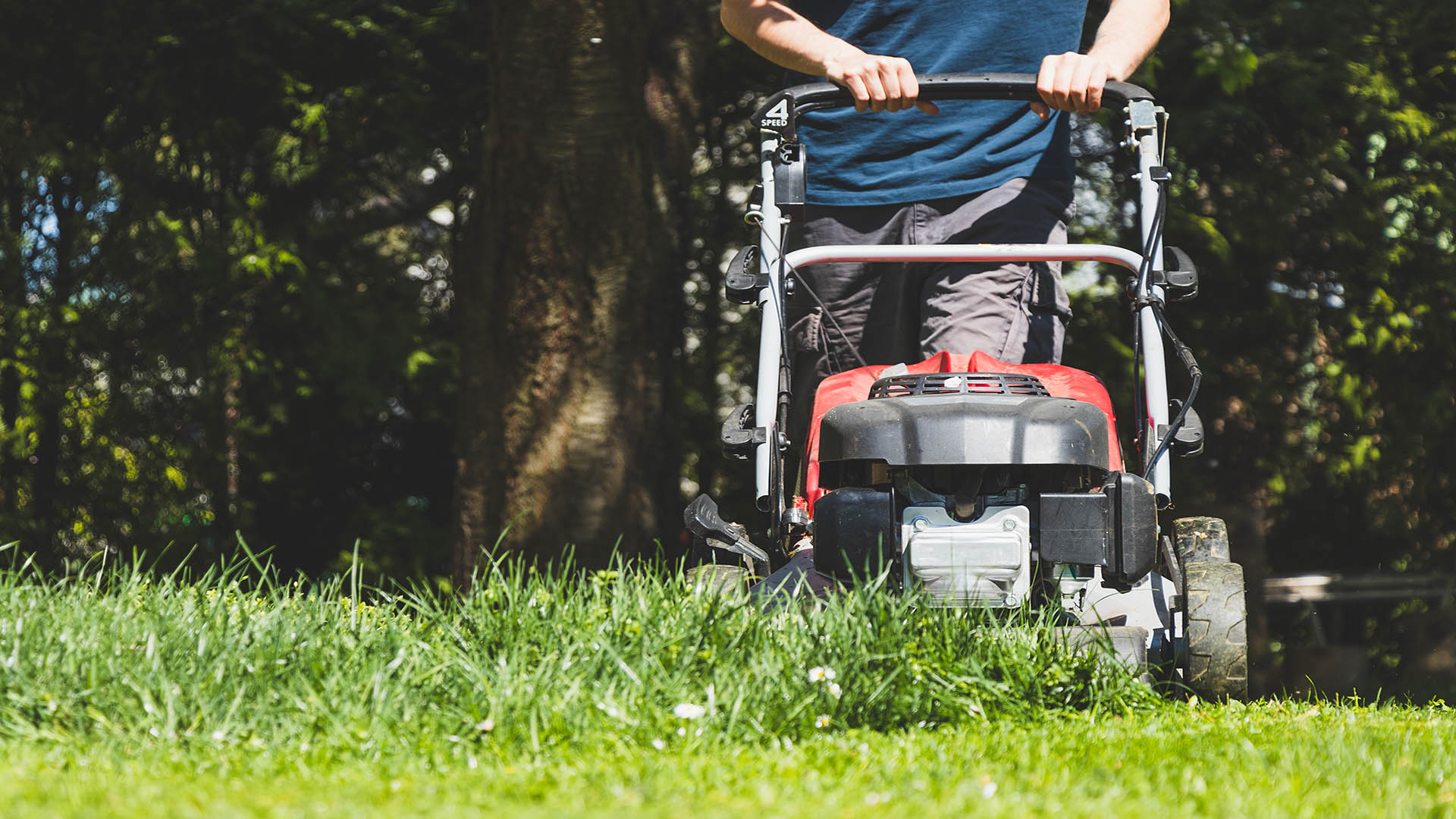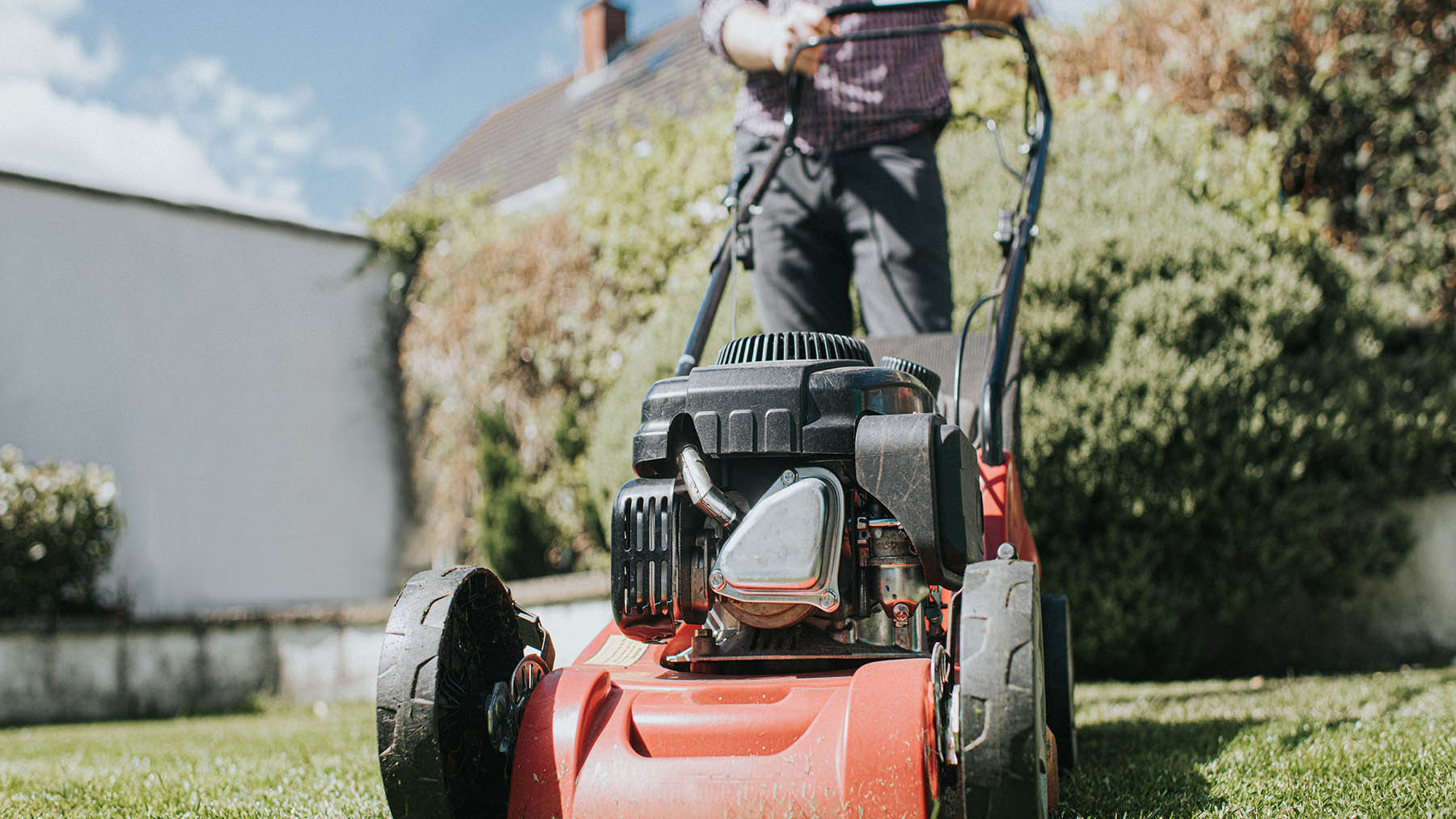Wondering whether to get a push vs self-propelled lawnmower in your fight against untidy gardens? Both mower styles are great for keeping lawns neat and healthy but come with their pros and cons.
Push mowers are what you would typically think of when picturing a lawn mower. Often fueled by gas or electricity, push mowers require you to use your strength to propel them forward. There are two types of push mowers - reel and motorized - for your convenience. Push mowers are often lighter than their self-propelled counterparts.
Self-propelled mowers, on the other hand, have a drive system that pushes them forward while you steer; think of it as similar to a car’s drive system. Continuing the similarity to cars, you can get front-wheel drive and rear-wheel drive self-propelled mowers to help tackle your unkempt lawn. Self-propelled mowers typically run on either gas or electricity and are heavier than push models due to the motorized drive system.
But what should you consider when looking for the best lawn mower? We caught up with lawn mower expert Gary Whitney for his thoughts. He suggests that you consider “What size and layout lawn you have and if there are tricky sections. [What is] the price you want to pay? Consider whether the interchangeable battery benefits [of some models] would be preferable [to you]. Also, the environment and the benefits of battery mowing…Do you want your mower to mulch or discharge your cuttings? Make sure the price is right for you and [that] you get the utmost features for this.”
But is a push vs self-propelled mower better for your garden? Let’s cut to the chase and discuss the facts behind these titans of mowing.
What’s the difference between a push and a self-propelled mower?
The main differences between self-propelled and push mowers come down to how they propel forward and how they work.
As we briefly mentioned above, push mowers can be powered by gas or electricity just like self-propelled models. However, you must use your strength to push it along the grass and in the direction you wish to move. Self-propelled mowers have a drive system that propels them forward, with you simply directing it. This drive system can speed up your mowing process and make these mowers easier to move around.
As a result of the drive system, self-propelled mowers are often heavier and larger than their push counterparts. However, they take less physical energy to use and are great for large lawns with uneven surfaces. On the other hand, push mowers are lighter and more compact than most self-propelled models but do require more effort to use.
How both models work is also a key difference between the styles. Self-propelled lawnmowers tend to have a bar or catch on the handle that engages the drive, controlling the spinning blades and propulsion; when you let go, the mower should shut down. This makes them incredibly handy to move around without the risk of dulling the blades on pavement or stone.
Push mowers are much simpler, requiring a little fuel to move the blades and your effort to move around your lawn. There are additional features that you can get that will make mowing a smoother experience, but they are simple at their core.
Now that we have split grass hairs regarding the key differences between the two types of lawnmowers, it is time to pit them against each other. Let’s get down to the root of which is better in the push vs self-propelled mower debate in terms of cut, price, durability, and energy efficiency.
Push vs self-propelled lawn mower: Which cuts better?
How a mower cuts is what separates the weeds from the grass. The cut of the blades will ultimately decide the health of your grass, how it looks overall, and how often you will need to mow it. Certain lawns have tricky areas like dips or hills that can make getting an even, uniform cut difficult. Which one cuts better - a push mower or a self-propelled model?
Self-propelled models have the advantage for those who care about uniformity. Their drive system makes dealing with hills and valleys a simple task, always cutting in neat, even lines. The bar or catch is there to help you control when the blades are in use, making it even easier to get those crisp grassy lines. In addition, self-propelled mowers make cutting the lawn faster than their push mower counterparts.
Push mowers are more likely to experience human error when it comes to uniformity. As you are pushing the mower yourself without the aid of a drive system, the final cut will be affected by your walk speed and consistency. Hills and dips can often be the cause of errors as you strain to get your mower to the top. However, while the final result can sometimes be less even, push mowers allow you a lot of control when it comes to speed, letting you hone in meticulously on tricky areas or edges.
Overall, the self-propelled mower comes out on top due to its even cuts and uniformity on both flat and uneven lawns. However, not everyone feels the need to aim for perfection; in this case, we would suggest the push mower is a good choice. Also, for flatter and smaller lawns, a good-quality push mower would be sufficient.

Push vs self-propelled lawn mower: Which is the cheapest?
Getting a good deal on a mower can make your freshly cut lawn smell even sweeter. Price is a key determining factor for many lawncare enthusiasts and it is important to try and get the right features for the right price. While you are shopping around, set a budget in advance and consider what features would make cutting your lawn easier for you. Gary Whitney suggests that you: “Make sure it is from a recognized quality brand such as STIGA. [You must] make sure you are getting as many features as possible for the price you want to pay.”
Self-propelled mowers are typically more expensive than their push mower counterparts precisely because of their drive system. Interestingly, front-wheel drive self-propelled mowers tend to be cheaper than their rear-wheel counterparts as the motor is harder to configure when it is placed on the back between two large wheels. However, this uptick in price is also due to a much higher top speed and power, which can be worth the investment. Overall, self-propelled mowers tend to cost between $150 and $2500, with most customers paying around $375.
Push mowers are typically cheaper than their self-propelled rivals as they lack the complicated machinery that makes self-propelled ones work. Modern push mowers have a variety of features that can make using them easier than their predecessors, like automatic mulching systems, cut height adjusters, and effective front grass collectors. Typically, you can expect to pay between $150 and $600 for a push mower, with most people typically purchasing models at the $265 price point.
The running cost of both push mowers and self-propelled models will vary depending on whether you choose to use gas, battery, or corded models. As a rule, self-propelled mowers tend to use more energy to run the self-propulsion system as well as the engine itself. Push mowers often use less power due to the lack of a motor and their lighter build. Therefore they are generally cheaper to run as you support them with your strength. Powerless mowers are completely free to run as they rely completely on your energy rather than a fuel source.
Overall, we would suggest getting a push mower if you have a limited budget or do not need tonnes of bells and whistles. Self-propelled mowers are a great investment for those who have higher budgets and much larger gardens to take care of.
Push vs self-propelled lawn mower: How long do they last?
Mowers are one of the more expensive tools in any gardener’s shed, so you want to make sure you get the most bang for your buck. It can be easy to wonder whether there is a difference in durability between these two titans of mowing.
How long a mower lasts depends on a variety of factors, including the quality of its build and materials, how well it is maintained, and how often it is used. If you want a general indicator of how long your chosen model is expected to last, we recommend checking its warranty. Garry Whitney agrees, suggesting that you: “Make sure any warranty covers all parts and labor undertaken on your machine covered by the policy.” Warranties are a good sign of how much faith the company has in the lifespan of its product - most mowers tend to have warranties last between 3 and 5 years, with some aspects being broken down into categories like parts, labor, motor, and more.
We have found that there is no real discernable difference in durability or longevity between the two styles. Both push and self-propelled mowers tend to last between eight and ten years depending on how well they are maintained. If you want to split grassy hairs, push mowers can last over ten years with the right care, but the same could be said for a well-maintained quality self-propelled model.
Overall, there is so little difference in terms of longevity between the two that we would put them at a tie. For model-specific estimates, we recommend checking the length of its warranty, reading customer reviews, or contacting the brand directly.
Push vs self-propelled lawn mower: Which is most energy efficient?
Fuel is another incredibly important aspect of lawnmowers. Typically, both self-propelled and push mowers use either gas or electric, with electric models either being corded or battery-powered.
Electric mowers that are battery-powered typically both have more power and longer cutting times than their corded electric counterparts. Some brands even ensure that their batteries work with other vital gardening tools for added convenience, as Gary says: “STIGA’s batteries also have the bonus of being interchangeable between mowers and garden tools.” Electric mowers are the more energy-efficient option, particularly if you are willing to pay more for a solar-powered model. The Electric Power Research Institute suggests that if half of all people switched to electric lawnmowers it would have the same environmental impact as removing two million vehicles from the road - talk about a high-power impact.
Gas mowers are a classic, but are not as environmentally friendly or quiet as electric models. These noisy mowers can generate the same level of pollution in one hour as you would driving a car for 300 miles. However, they make up for that by being more powerful and adept at handling heavy-duty tasks and longer grass. Additionally, modern gas mowers are becoming more energy efficient by the year, but it can be hard to separate the wheat from the chaff as mowers do not get Energy Star Ratings. We suggest looking for a mower that has a four-cycle OHV engine; they are more costly but make a world of difference when it comes to emissions and sound.
But which is better when it comes to self-propelled vs push mowers? Gary Whitney gave his thoughts on current mower trends: “Some still enjoy using the push mower, but self-propelled battery mowers are coming to the fore now, and are a quieter, cleaner option to petrol mowers.”
Verdict
Both push mowers and self-propelled mowers have plenty to offer; the best one will depend on what you consider most important in a mower. Garry gives his thoughts on whether self-propelled mowers are as good as push ones, suggesting that: Yes they [are], especially the new generation of battery-powered ones.”
Self-propelled mowers are best for those with mobility issues or very uneven large lawns. On the other hand, push mowers are best for those with smaller gardens that require a heavy-duty mower. No matter what you decide, do your research carefully and bargain hunt to ensure you get all the convenient features you want for the right price.
